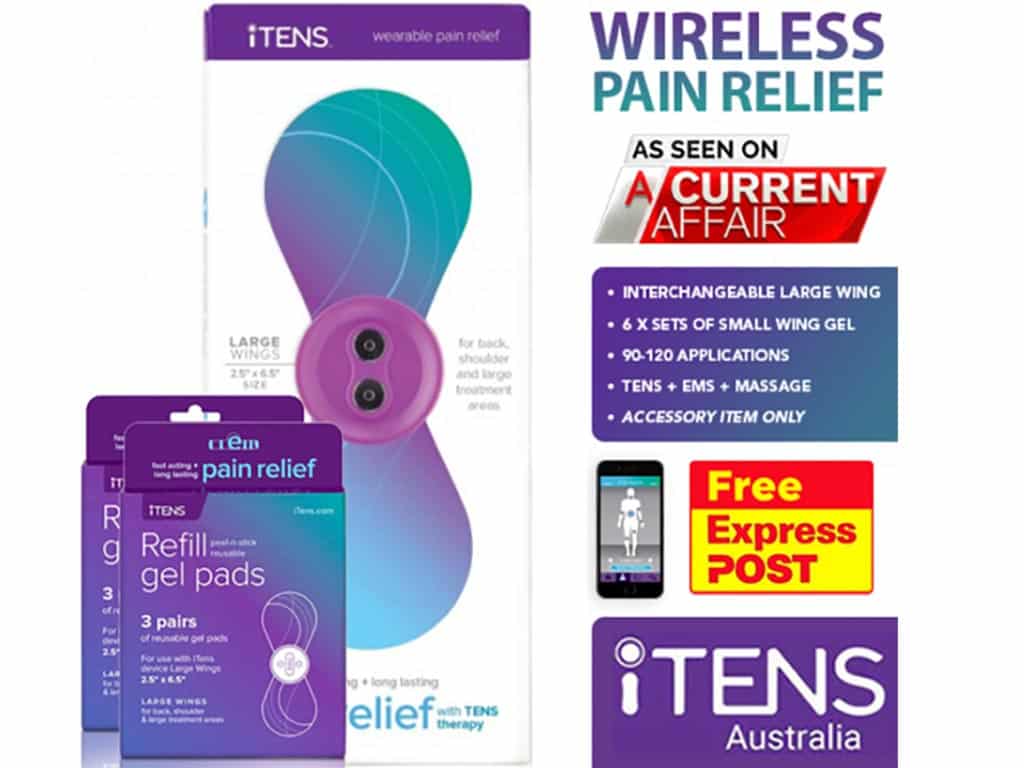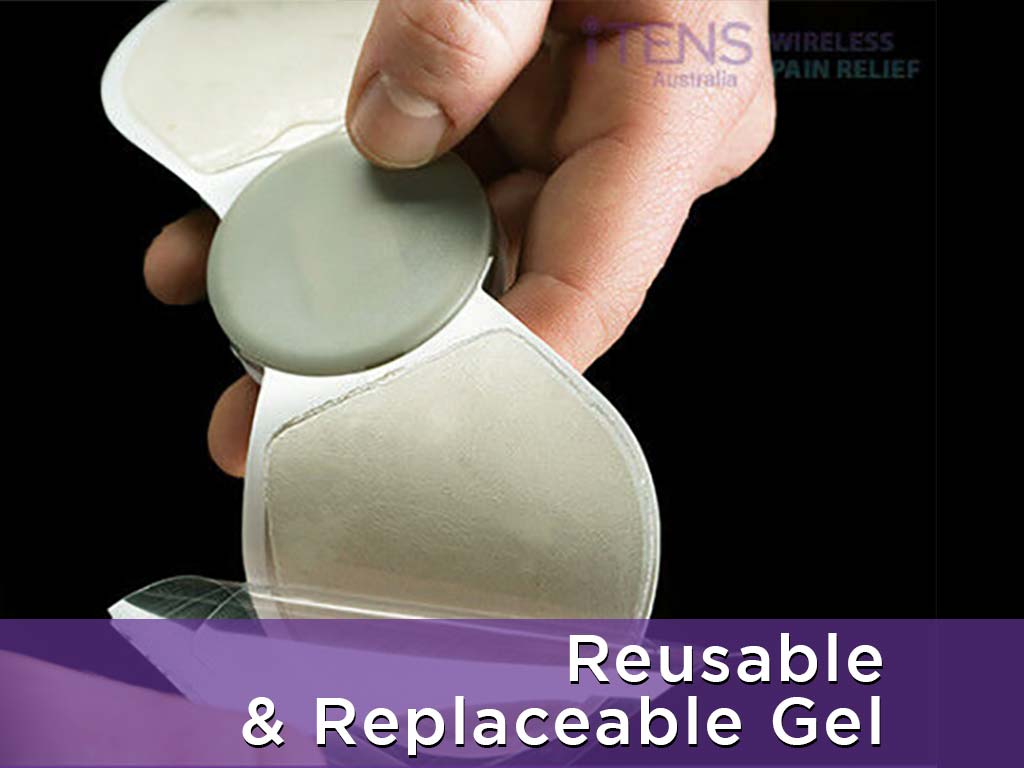
A Transcutaneous Electrical Nerve Stimulation or TENS unit for sciatica hip pain is a small device that provides pain relief by sending gentle electrical currents. It targets the nerves in the hip area. To properly place the pads, one should first clean the treatment area. Then, they should place the electrodes on either side of the spine at the level of the hips. It is important to periodically reposition the pads to prevent skin irritation.
TENS therapy provides numerous benefits for people. It is an effective method of pain relief for many chronic and acute pain conditions. Health professionals frequently integrate this into their treatment plans as it complements other therapies. Additionally, TENS helps people reduce their intake of oral pain medications. This article will present what a TENS device for sciatica hip pain is, including its proper pad placement and safety precautions.
What is a TENS Unit for Sciatica Hip Pain?
Sciatica hip pain is a condition that occurs when the sciatic nerve becomes irritated or compressed. This can cause pain, numbness, tingling, or weakness in the hip, buttocks, and down the leg. The hip is often affected because the sciatic nerve passes through the hip area. Sciatica hip pain can range from mild to severe and can greatly impact mobility and quality of life.
A TENS unit for sciatica hip pain is a battery-operated device that sends low-voltage electrical currents to the nerves for pain relief. It produces tingling sensations, which can be strong but painless. A TENS device relies on electrical impulses to block pain signals from reaching the brain. These electrical pulses also aid in the release of endorphins, the natural pain relievers of the body.
Aside from sciatica pain, TENS devices can help alleviate other chronic or acute pain conditions. These include knee pain, shoulder pain, cancer pain, osteoarthritis pain, and post-operative pain. Modern wireless TENS devices like the iTENS from iTENS Australia are safe and convenient to use. These units utilise Bluetooth-capable electrodes and pair seamlessly with most iOS and Android devices.
Symptoms of the Ailment
- People often experience a sharp, shooting pain that originates in the lower back or buttock and travels down the back of the thigh.
- Pain follows the path of the sciatic nerve, extending into the hip and sometimes reaching the calf or foot.
- Feelings of numbness or tingling, similar to pins and needles, are common in the hip, thigh, or leg.
- Some may notice weakness in the affected leg, making activities like standing up or walking challenging.
- Pain tends to worsen with specific movements or positions, such as sitting for prolonged periods or standing for too long.

Pad Placement Guide When Using a TENS Unit for Sciatica Hip Pain
When using a TENS unit for sciatica hip pain, it is important to follow the pad placement guide. To start, clean the skin where the electrode pads will be placed to ensure good contact and optimal performance. Physical therapists recommend placing the pads on either side of the spine at the level of the hips for sciatic pain relief.
Next, reposition the pads periodically to avoid skin irritation and to target different areas of the hip and lower back. This can help provide overall relief and prevent discomfort in a specific area from prolonged use. By following the pad placement guide, individuals with sciatica hip pain can experience effective relief.
Over time, adhesive electrodes will accumulate gel pad residue as users peel the gel on and off. It is good to periodically remove the gel residue by wiping with a moist towel or cloth. Furthermore, always keep the machine in a cool, dry place after use to ensure its longevity.
How to Use the Device
To use the TENS device for sciatica hip pain, begin by placing the electrode pads on the skin around the area of pain. Then, turn on the TENS device and start with a low-intensity setting. Gradually increase the intensity until a tingling sensation is felt at the site of pain.
It is important to adjust the settings to a comfortable level that provides relief without causing discomfort. The treatment session should last for about 20-30 minutes at a time, several times a day if needed. After the session is complete, turn off the TENS device and carefully remove the electrode pads from the skin.

Precautions When Operating a TENS Unit for Sciatica Hip Pain
While using a TENS unit for sciatica hip pain, it is crucial to stay alert and take precautions. It is best to consult a health professional before using electrotherapy devices. They can help assess if TENS is suitable for the sciatica condition of the user. In addition, certain health conditions may have a negative response to electrical stimulation. This includes those with a history of cancer, epilepsy, seizures, or heart disease.
Moreover, it is vital to read the guidelines of the device manufacturer. This will guide the user on how to correctly utilise the machine. Also, people should not place the pads on broken skin. Furthermore, they have to avoid positioning electrodes in sensitive areas, such as the throat, chest, spine, or head.
TENS therapy should not be done while sleeping, driving, or operating heavy machinery. It is also advisable to keep a safe distance from water to prevent accidental shocks. Lastly, regularly inspect the device for any damage. Broken electrodes or lead wires may cause mild burns or skin irritation.
When to Seek Medical Help
While TENS provides effective pain relief, it does not heal the injury directly. For people dealing with sciatica hip pain, it is crucial to seek medical attention in certain instances. Firstly, if the user experiences worsening pain during or after the session. This may be a sign of an underlying condition.
Secondly, seek help if people experience allergic reactions, excessive muscle twitching, or tingling sensations after the session. Lastly, the appearance of symptoms, such as loss of bladder or bowel control, weakness in the legs, and difficulty walking, may indicate a severe underlying condition that should be addressed by a medical professional.
Conclusion
A TENS unit for sciatica hip pain offers relief by sending gentle electric pulses to nerves. To correctly place the pads, one should first clean the skin. They can then place the electrodes on either side of the spine at hip level. After use, people should clean the gel pad residue for optimal performance and store the device in a cool, dry place. Following these steps ensures that the TENS unit works well.
Moreover, individuals should prioritise safety precautions by consulting a healthcare professional and strictly adhering to device guidelines. Users must refrain from placing pads on broken skin or sensitive areas. Additionally, the device should not be used in specific situations, such as during sleep or in proximity to water. Regular checks of the device are necessary to prevent potential harm. In case of worsening pain or the occurrence of unusual reactions, users should promptly seek medical help.




















